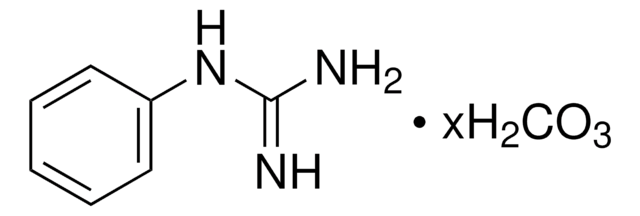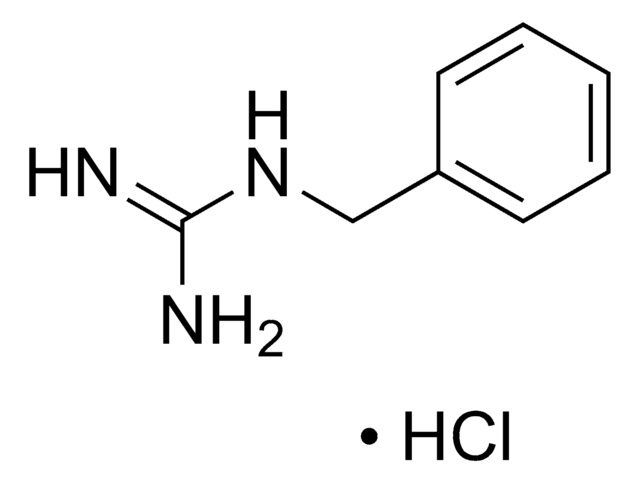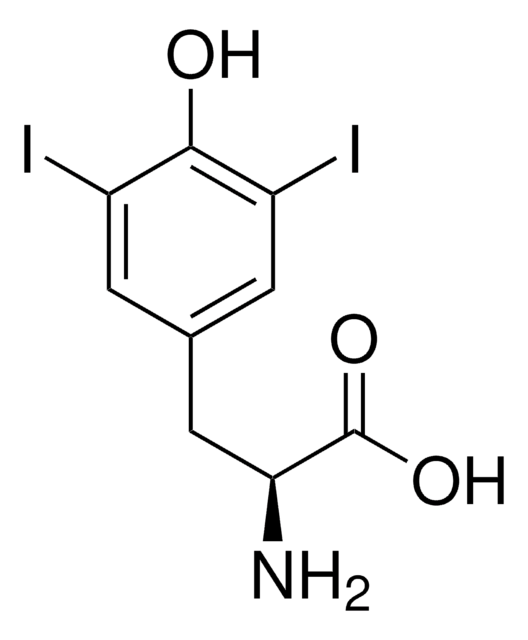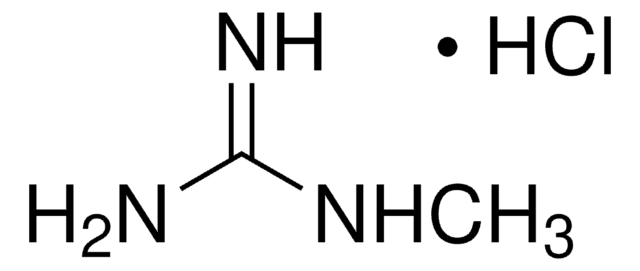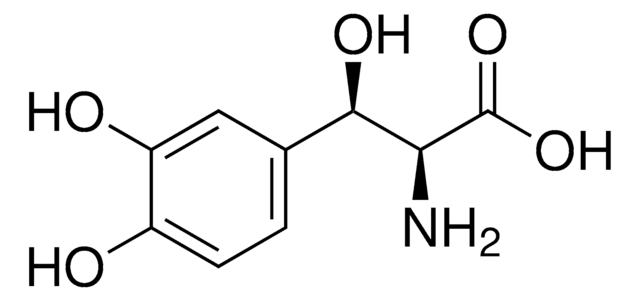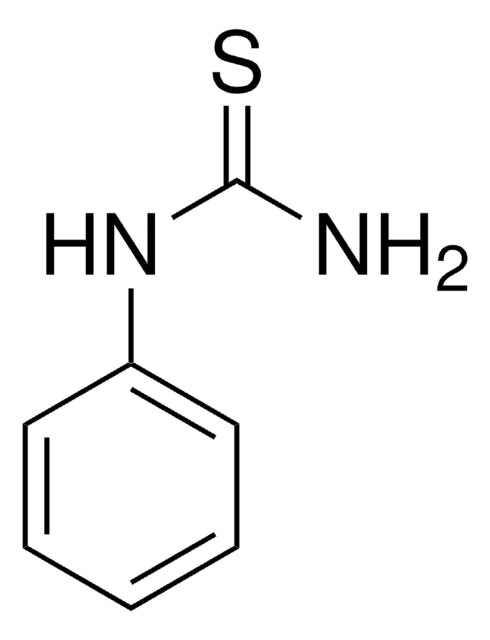All Photos(1)
About This Item
Linear Formula:
CH5N3O · 1/2H2SO4
CAS Number:
Molecular Weight:
124.11
EC Number:
MDL number:
UNSPSC Code:
12352202
PubChem Substance ID:
NACRES:
NA.77
Recommended Products
biological source
synthetic (organic)
Assay
≥98% (TLC)
form
powder
solubility
water: 25 mg/mL, clear, colorless
storage temp.
2-8°C
SMILES string
NC(=N)NO.NC(=N)NO.OS(O)(=O)=O
InChI
1S/2CH5N3O.H2O4S/c2*2-1(3)4-5;1-5(2,3)4/h2*5H,(H4,2,3,4);(H2,1,2,3,4)
InChI key
MTGDDPZRXSDPFH-UHFFFAOYSA-N
Biochem/physiol Actions
An early antitumor agent. Oxidation results in release of NO, and formation of other reactive oxygen species, including peroxynitrite and peroxyl radicals. Reacts with NO to form an adduct which is a potent and stable vasodilator.
Storage Class Code
11 - Combustible Solids
WGK
WGK 3
Flash Point(F)
Not applicable
Flash Point(C)
Not applicable
Personal Protective Equipment
dust mask type N95 (US), Eyeshields, Gloves
Choose from one of the most recent versions:
Already Own This Product?
Find documentation for the products that you have recently purchased in the Document Library.
Rémy Ricoux et al.
European journal of biochemistry, 270(1), 47-55 (2002-12-21)
Nitric oxide (NO) is a potent intra- and intercellular messenger involved in the control of vascular tone, neuronal signalling and host response to infection. In mammals, NO is synthesized by oxidation of l-arginine catalysed by hemeproteins called NO-synthases with intermediate
Ming Xian et al.
Bioorganic & medicinal chemistry, 10(9), 3049-3055 (2002-07-12)
Enzymatic generation of nitric oxide (NO) by nitric oxide synthase (NOS) consists of two oxidation steps. The first step converts L-arginine to N(G)-hydroxy-L-arginine (NOHA), a key intermediate, and the second step converts NOHA to NO and L-citrulline. To fully probe
Tingwei Cai et al.
Bioorganic & medicinal chemistry letters, 12(11), 1507-1510 (2002-05-29)
The electrochemical properties of a series of N-substituted-N'-hydroxyguanidines were studied. Two oxidation potentials of each compound were obtained by cyclic voltammetry. The E(ox1) values were from 0.51 to 0.62V, while the E(ox2) values were from 1.14 to 1.81V in acetonitrile
David Lefèvre-Groboillot et al.
Biochemistry, 42(13), 3858-3867 (2003-04-02)
The interaction of various N-alkyl- and N-aryl-N'-hydroxyguanidines with recombinant NOS containing or not containing tetrahydrobiopterin (BH(4)) was studied by visible, electronic paramagnetic resonance (EPR), and resonance Raman (RR) spectroscopy. N-Hydroxyguanidines interact with the oxygenase domain of BH(4)-free inducible NOS (BH(4)-free
S A Everett et al.
Free radical biology & medicine, 24(1), 1-10 (1998-01-22)
The oxidative denitrification of the antitumour agent hydroxyguanidine (HOG) has been investigated by radiolysis methods and EPR spectroscopy. The azide radical (N3.), a model one-electron oxidant, reacts with HOG with the rate constant 5.1 x 10(9) dm3 mol(-1) s(-1) to
Our team of scientists has experience in all areas of research including Life Science, Material Science, Chemical Synthesis, Chromatography, Analytical and many others.
Contact Technical Service